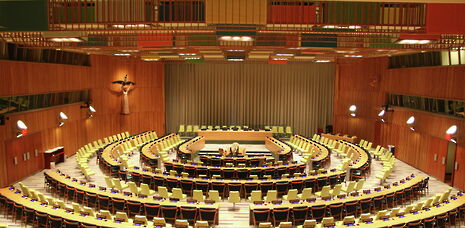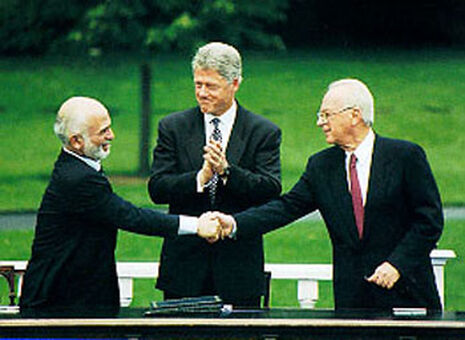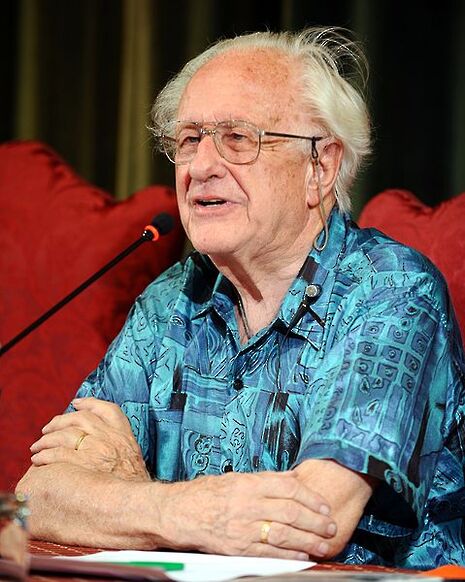Lasting global peace is achievable in 2017. Here’s how
Peace can feel like an abstract and impossible goal. But we have learnt new strategies from the lessons of 2016 which give hope for the future

2016 hasn’t been a great year for peace. A man who thinks waterboarding isn’t “tough enough” has been elected president of a global superpower. The world’s youngest country, South Sudan, is on the verge of genocide. And we are quite literally watching Aleppo burn as we read social media posts from its civilians. We live in an age where massacres are live-tweeted and Christmas markets are sites of terror.
But 2016 has been a great year for thinking about peace. A central question has emerged: what makes peace processes work long term? Peace processes, or attempts to resolve ongoing international conflict, have been underway for years in Israel, Palestine, Syria, Yemen, Cyprus, Northern Ireland, Western Sahara, Turkey, Colombia, India, Pakistan and many more regions. On a smaller scale, peace processes try to solve temporary intrastate tensions, like post-Brexit riots or violent Trump rallies. On a tinier scale still, individuals routinely face issues requiring peaceful negotiation, be it bullying in school, discrimination in the workplace or disputes with friends. All these situations require a process through which lasting peace is achieved.
One strategy proven to facilitate peace talks is psychologist Gordon Allport’s ‘contact hypothesis’. Allport suggests that interpersonal contact is the most effective way to dissolve prejudice. If hostile groups engage in respectful dialogue face to face, their pre-existing stereotypes and biases tend to fade. Face-to-face contact is key, because people are more likely to feel compassion in person than over the phone or behind a screen (as anyone who’s ever read internet comment sections can guess).

Of course, Allport’s formula doesn’t always work. The history of peacemaking is filled with disastrous face-to-face meetings, be it the shoe-throwing in the 2015 Yemen talks or General Stilwell’s poem about kicking Chiang Kai-shek in the pants all the way back in 1944. But if participants are willing to understand each other (again, sometimes a tall order), the intimacy of a personal meeting can transform the chances of peace being agreed upon. Linda Bishai, working in Sudan, tells of the significance of interpersonal interaction in her story about the 2003 peace talks between southern negotiator John Garang and northern negotiator Minister Taha. Initially, the atmosphere was tense because of the lack of trust between the two. But it eased the minute Garang picked up a glass and poured Taha some water. This trivial gesture was a cultural signifier that Garang was ready to accommodate Taha’s needs – and the beginning of a peace process that ended a 22-year civil war between north and south Sudan.
“Thinking about and agitating for peace in 2016 can seem like an impossible dream.”
A contemporary example of the power of face-to-face contact to spark empathy and understanding is Amnesty’s Beyond Borders video. ‘Beyond Borders’, a social experiment, featured refugees from Somalia and Syria sitting opposite people from Belgium, Italy, Germany, Poland and the UK. A mere four minutes of uninterrupted eye contact and a gentle exchange of stories made participants feel connected and more empathetic.
The straightforwardness of this path to peace – simply putting people in the same room and creating an environment where they can start a dialogue – make us question whether human beings are as complicated as we like to think. Although Allport’s hypothesis may be overly optimistic and idealistic in some cases, it can provide peacemakers with a valuable starting point.
Peace is often represented as a moment, such as the moment when two soldiers put down their weapons in a war. But achieving lasting peace is more complex, and can be broken down into three areas – peacebuilding, peacemaking and peacekeeping. According to the UN, peacemaking entails resolving disputes through diplomatic and judicial means, while peacekeeping entails ensuring agreements are maintained. By contrast, peacebuilding is a more holistic process. It addresses the underlying causes of violence and attempts to remedy social injustice, political oppression and economic inequality. If we see peace talks as a combination of all three, we can focus on seeking lasting, comprehensive solutions as well as immediate ones to end conflict (like finding treatment for the causes of an illness as well as quick fixes for its symptoms). As Johan Galtung said, peace is not just ‘negative’ (the absence of war) but also ‘positive’, a force to actively transform society, restore relationships and create mechanisms for constructive conflict.

Approaching peace talks with a ‘positive peace’ mindset can widen the scope of the discussion and give peacebuilders new insight. The UN has decided to redress the exclusion of minorities in disturbed regions by promoting the role of women in peace processes. Peace researchers Andrea Sullivan, Thania Paffenholz and Marie O’Reilly explain that if the goal is simply to end violence, then women may not be allowed a voice because they rarely initiate war. But if the goal is ‘positive peace’, then women and other marginalised groups have a right to be included, as decisions will impact the entire society. In 2014, Colombian women successfully lobbied for the first gender-subcommission in peace talks, and a woman led the Philippines Government delegation against the Moro Islamic Liberation Front. Their influence is beneficial: research shows that women’s participation increases the probability of a peace agreement lasting at least two years by 20 per cent, and at least 15 years by 35 per cent.
Thinking about and agitating for peace in 2017 can seem like an impossible dream. But the evidence shows that two factors work to increase the success of peace talks; face-to-face dialogue to avoid dehumanising the enemy, and the inclusion of traditionally overlooked groups for more progressive, long-lasting agreements. If NGOs and the UN can apply some of strategies we have learnt in 2016 in 2017, there is real hope for a world without violence
 News / Fitz students face ‘massive invasion of privacy’ over messy rooms23 April 2024
News / Fitz students face ‘massive invasion of privacy’ over messy rooms23 April 2024 News / Climate activists smash windows of Cambridge Energy Institute22 April 2024
News / Climate activists smash windows of Cambridge Energy Institute22 April 2024 News / Copycat don caught again19 April 2024
News / Copycat don caught again19 April 2024 News / Emmanuel College cuts ties with ‘race-realist’ fellow19 April 2024
News / Emmanuel College cuts ties with ‘race-realist’ fellow19 April 2024 Comment / Does Lucy Cavendish need a billionaire bailout?22 April 2024
Comment / Does Lucy Cavendish need a billionaire bailout?22 April 2024





